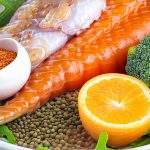Flow discomfort – that vague yet frustrating feeling encompassing bloating, gas, irregularity, and overall digestive unease – impacts countless individuals. It’s often dismissed as a minor inconvenience, but persistent flow issues can significantly disrupt daily life, impacting energy levels, mood, and even self-confidence. Many factors contribute to this discomfort, ranging from dietary choices and stress levels to dehydration and insufficient fiber intake. While over-the-counter remedies offer temporary relief, truly addressing the root causes often requires a holistic approach centered on natural strategies that support optimal digestive function. This isn’t about eliminating favorite foods or adhering to restrictive diets; it’s about intelligently incorporating simple additions and adjustments into your existing eating habits to foster a more comfortable and harmonious relationship with food.
The good news is that subtle changes can yield substantial benefits. Often, easing flow discomfort doesn’t demand drastic lifestyle overhauls. Instead, focusing on nutrient-dense foods and strategically integrating natural “boosters” – ingredients known for their digestive properties – can make a world of difference. These aren’t quick fixes, but rather tools to nurture your gut health over time, leading to more consistent comfort and improved overall wellbeing. This article will explore some readily available and easily incorporated natural meal boosters that can help ease flow discomfort and promote a happier, healthier digestive system. We’ll focus on practical applications and explain the underlying principles behind each suggestion, empowering you to make informed choices tailored to your individual needs.
Fiber-Rich Foundations
Fiber is arguably the cornerstone of healthy digestion. It acts like a natural broom, sweeping through the digestive tract, adding bulk to stool, and promoting regular bowel movements. However, it’s not just about quantity – the type of fiber matters too. Insoluble fiber adds bulk, while soluble fiber dissolves in water, forming a gel-like substance that softens stool and can help lower cholesterol levels. A balanced intake of both is ideal for optimal flow. Many people simply don’t get enough fiber in their diets, leading to constipation and discomfort. Increasing your fiber intake gradually is crucial to avoid bloating; suddenly adding large amounts can actually exacerbate the problem.
Incorporating fiber-rich foods into each meal is a powerful starting point. Think beyond bran flakes! Fruits like apples (with skin), berries, and pears are excellent sources of soluble fiber. Vegetables such as broccoli, Brussels sprouts, and carrots provide insoluble fiber. Legumes – lentils, chickpeas, and beans – are nutritional powerhouses packed with both types of fiber. Whole grains like quinoa, brown rice, and oats offer sustained energy alongside their digestive benefits. Even chia seeds and flaxseeds can be easily added to smoothies, yogurt, or oatmeal for a significant fiber boost. Remember to drink plenty of water when increasing your fiber intake; this helps the fiber work effectively and prevents constipation. If you’re looking to optimize your diet further, consider exploring a daily eating style that minimizes flow tension.
A simple strategy is to “fiber-up” existing meals: add a handful of spinach to your omelet, sprinkle chia seeds on your cereal, or swap white rice for brown rice. Small changes consistently applied can make a significant difference over time. Focus on choosing whole, unprocessed foods whenever possible, as these naturally contain more fiber and essential nutrients than their refined counterparts.
The Power of Probiotics & Fermented Foods
Probiotics are live microorganisms that, when consumed in adequate amounts, confer health benefits to the host – essentially, they’re “good” bacteria that support a healthy gut microbiome. A balanced gut microbiome is vital for digestion, nutrient absorption, and immune function. Fermented foods are naturally rich in probiotics and have been used for centuries to promote digestive wellbeing. Introducing more probiotic-rich foods into your diet can help restore balance and ease flow discomfort.
Consider incorporating these fermented delights: – Yogurt (with live and active cultures) – a classic source of probiotics – Kefir – a fermented milk drink similar to yogurt, but often containing a wider variety of strains – Sauerkraut – fermented cabbage, traditionally enjoyed in Germany – Kimchi – a spicy Korean side dish made from fermented vegetables – Kombucha – a fermented tea beverage. For additional dietary support, you might also find plant-based meal ideas for urinary ease helpful.
It’s important to note that not all yogurts contain live cultures, so check the label carefully. Start with small amounts of fermented foods and gradually increase your intake as tolerated; some individuals may experience temporary bloating or gas when first introducing these foods into their diet. The goal is to cultivate a thriving gut microbiome, which will ultimately lead to improved digestion and reduced discomfort.
Hydration: The Often-Forgotten Factor
Dehydration can significantly contribute to flow discomfort. Water is essential for moving food through the digestive system efficiently. When you’re dehydrated, your body pulls water from stool, making it harder and more difficult to pass, leading to constipation and bloating. Many people mistake thirst for hunger, often reaching for snacks instead of a glass of water.
Aim to drink at least eight glasses of water per day, but adjust this based on your activity level, climate, and individual needs. Carry a reusable water bottle with you as a visual reminder to stay hydrated throughout the day. Infusing your water with fruits like lemon, cucumber, or berries can make it more appealing and encourage you to drink more. Beyond plain water, herbal teas (like peppermint or ginger) can also contribute to hydration while offering additional digestive benefits. Avoid sugary drinks, which can actually worsen flow discomfort and disrupt gut health. Staying well-hydrated is often the first step towards feeling better – consider pairing this with evening routines that ease urethral discomfort for optimal results.
Ginger & Peppermint: Natural Soothing Agents
Ginger and peppermint are renowned for their ability to soothe digestive upset and ease flow discomfort. Ginger contains compounds that help speed up gastric emptying, reducing bloating and nausea. It also has anti-inflammatory properties, which can alleviate intestinal irritation. Peppermint, on the other hand, relaxes the muscles of the gastrointestinal tract, relieving spasms and reducing gas.
You can incorporate ginger into your diet in various ways: – Grate fresh ginger into stir-fries or teas – Add ground ginger to baking recipes – Chew on a small piece of crystallized ginger. Similarly, peppermint offers versatile applications: – Sip peppermint tea after meals – Add peppermint extract to smoothies or desserts – Use peppermint essential oil (diluted) for aromatherapy. For a broader approach to soothing discomfort, explore natural foods that soothe urinary discomfort.
However, it’s important to be mindful that individuals with certain conditions, such as GERD (gastroesophageal reflux disease), may find that peppermint worsens their symptoms; in these cases, ginger might be a more suitable option. Experimenting to see which herb works best for you is key. Remember, these are natural boosters – they work best when combined with a balanced diet and healthy lifestyle habits. If you’re planning trips, remember to review meal strategies for long trips with flow risk.





















